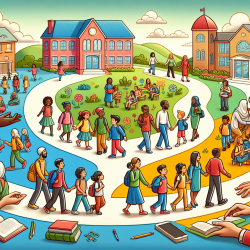Unlocking the Secrets to a Smooth Transition from Elementary to Secondary School
The transition from elementary to secondary school marks a significant milestone in a student's academic journey. It is a period filled with anticipation and, sometimes, anxiety. Understanding the factors that contribute to a smooth transition can help educators, parents, and students navigate this crucial phase with confidence.
Understanding the Purpose of the Guide
The purpose of the guide is to provide insights and strategies to ensure a seamless transition from elementary to secondary school. By analyzing, improving, and implementing effective measures, schools can address the academic, personal, family, social, and cultural needs of students during this critical time.
Who Benefits from This Guide?
This guide is designed for school administrators, educational services staff, teachers, and community partners. By fostering collaboration among these stakeholders, the guide aims to create an environment conducive to student success and retention.
What Constitutes a Smooth Transition?
A smooth transition involves a gradual adaptation to a new physical, social, and academic environment. It requires mutual adaptation among institutions to support the student's success at multiple levels. A successful transition enables students to:
- Recognize their strengths and challenges
- Form quality interpersonal relationships
- Feel comfortable and safe in their new environment
- Maintain a positive attitude towards learning
- Build confidence in their ability to succeed
The Importance of Transition Planning
Transition planning is crucial and should be a continuous process. Effective planning involves key stages over at least twelve months, beginning before admission to secondary school and extending through the first year. Special attention is required for students who start school mid-year due to relocation or other factors.
Principles Underlying a Smooth Transition
The guide outlines six principles that support a smooth transition:
- Parental Involvement: Parents play a crucial role in their children's education and transition process.
- Collaborative Efforts: All parties involved in the student's life must work together to ensure a smooth transition.
- Ongoing Planning and Evaluation: Transition activities should be planned, organized, and evaluated continuously.
- Resource Allocation: Adequate time and resources must be allocated for transition activities.
- Individualized Support: Measures should be adapted to each student's unique needs.
- Focus on Success and Retention: The transition is a determining factor in student success and retention.
Conclusion
A collaborative effort involving schools, families, and communities is essential for a smooth transition. By understanding and implementing the strategies outlined in the guide, stakeholders can help students overcome challenges and thrive in their new environment.
For more information, please follow this link.










